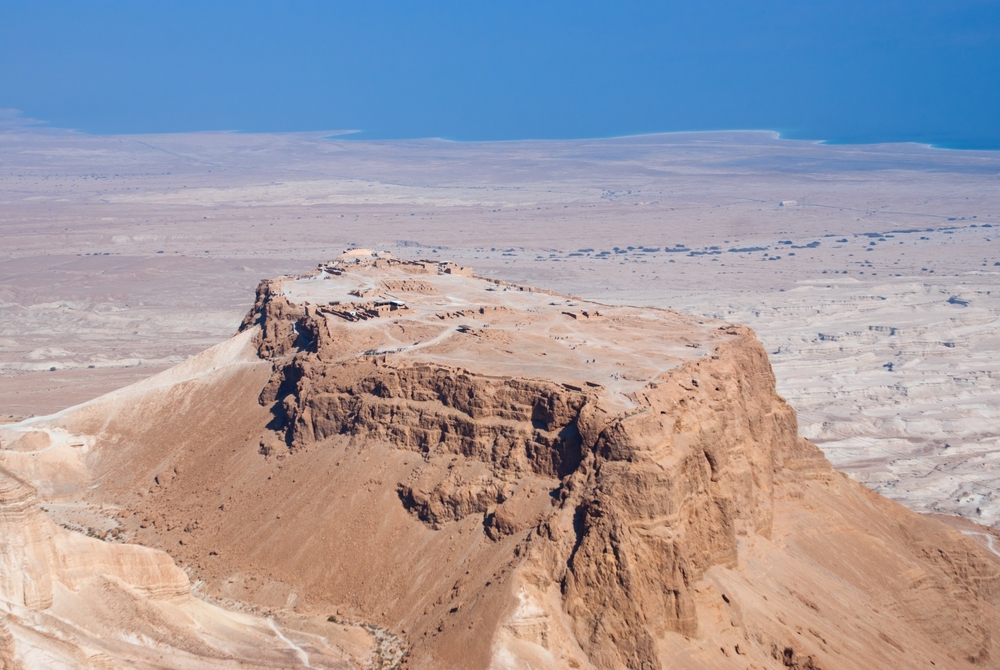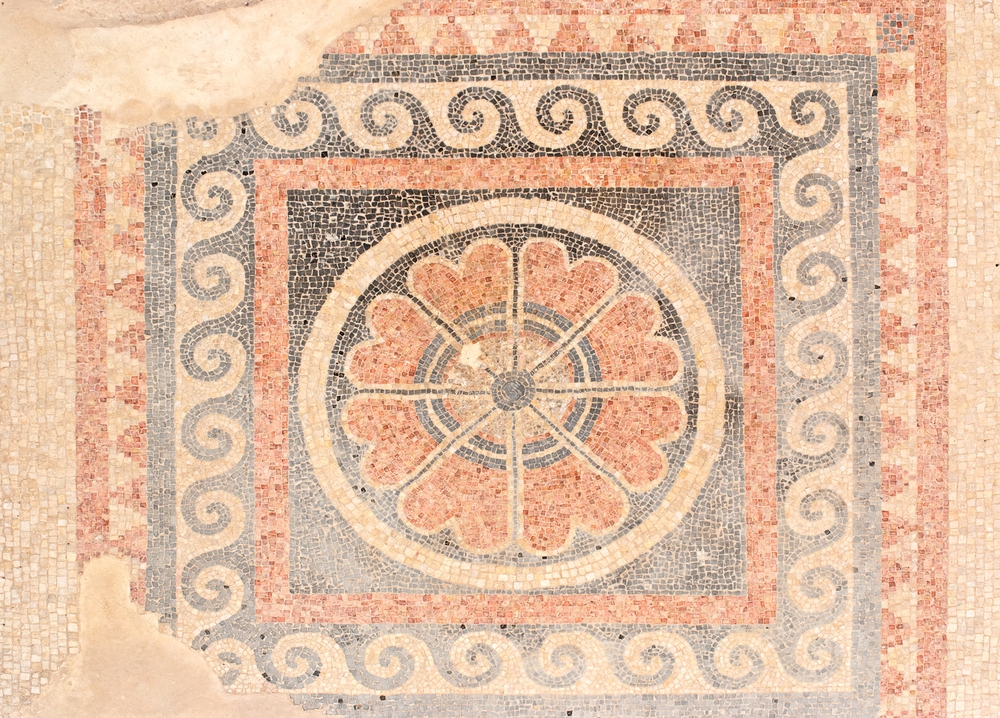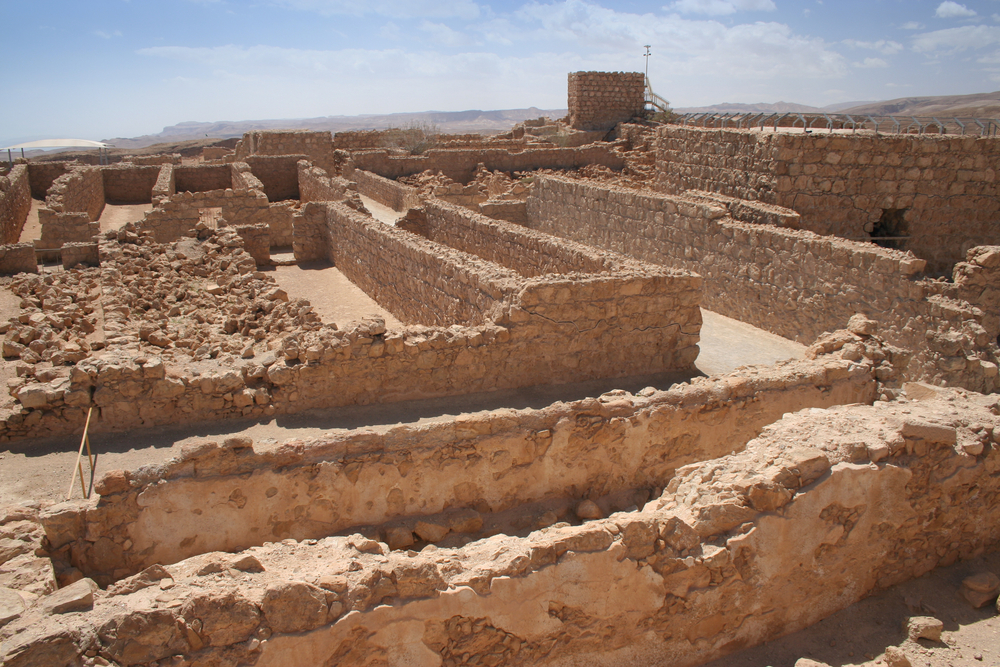Masada: Fortress of the Zealots

The cliff-top fortress of Masada, located in Israel near the Dead Sea, contained a series of palaces and buildings built by King Herod (74 B.C. – 4 B.C.), a ruler of Judea who was under the influence of Rome.
During the first Jewish revolt against the Romans (A.D. 66-73), it became a place of refuge for people fleeing the Roman army. It was the last rebel stronghold to hold out and was taken in either A.D. 73 or 74 after the Romans penetrated its walls using an elevated siege ramp and a force estimated to be as high as 9,000 soldiers.
The origins of Masada
The origins of Masada are a topic of debate and research. Flavius Josephus, a Jewish historian whose works were written in the years after the rebellion was crushed, said that a fortress was first constructed and named “Masada” (which derives from a Hebrew word for “fortress”) by “Jonathan the high priest,” a person whom some scholars identify as Alexander Jannaeus (103-76 BC), a Jewish ruler who controlled a kingdom in Israel.
Josephus also states that a few decades later, around 40 B.C., when Herod was battling a rival named Antigonus for control of Judea, the king left his family at Masada, the site being apparently strong enough to fend off a lengthy siege by his rival.
Modern-day archaeologists, however, have had a hard time backing up Josephus’ account of Masada’s origins. Archaeologist Hanan Eshel writes in his book "Masada: An Epic Story" (Carta, 2009) that no pottery predating the reign of Herod has been found at Masada. He does note, however, the presence of early coins at the site. He also writes that a piece of ostraca (pottery with writing on it), dating to the time of Jannaeus, was found at nearby Wadi Murrab’at and has the line “and I went up from there to Masada” written on it.
Archaeologist Ehud Netzer, in his book "The Architecture of Herod: The Great Builder" (Mohr Siebeck, 2006), tentatively dates the earliest building at Masada to around 35 B.C. and the date of the site’s walls and towers to about 15 B.C. This would put most, if not all, of the construction at the site to King Herod’s rule.
Herod’s fortress
By the time of Herod’s death in 4 B.C., the plateau had two major palaces and a series of buildings surrounded by a wall, just under a mile long, containing 27 towers. In addition, Masada had a system of water cisterns on the northwest slope and an extensive series of storehouses used for holding food and arms. These structures combined together meant that the site could hold out for a long time in the event of siege. It even had the ancient equivalent of a swimming pool.

Netzer writes that construction of the first palace built at Masada, the western palace, started around 35 B.C. and encompassed a core area roughly 90 feet (28 meters) by 80 feet (24 meters), with additions made as time went on. It had a courtyard about 40 feet (12 meters) by 34 feet (10.5 meters) in size. Netzer writes that the courtyard led to a reception room which in turn had access, “through three doorways,” to a place that some archaeologists consider to be a “throne room” about 28 feet (8.7 meters) by 20 feet (6 meters). Netzer believed that this “throne room” was in fact a second, walled in, reception room, used when the weather was bad.
The most spectacular surviving decorations at the western palace are located in the “mosaic room,” its southern portion was “paved with a mosaic having a colorful central carpet featuring a combination of geometric and floral designs, the most magnificent one revealed at Masada,” Netzer writes.
But while the western palace has its beauty, it is the northern palace, built into a jagged cliff on the site’s north cliff, that is “the pièce de résistance of his [Herod’s] building activities at Masada,” Netzer writes.
Josephus, who would have seen the palace from a distance in antiquity, writes that “the wall of this palace was very high and strong” and the palace itself was sumptuously furnished. “The furniture also of the edifices, and of the cloisters, and of the baths, was of great variety and very costly ...” (Translation from "The Works of Josephus," translated by William Whiston, Hendrickson Publishers, 1988.)
Netzer writes that the upper terrace had a hall and two bedrooms as well as a semi-circular balcony, while the middle terrace (built further down the cliff) had a circular colonnaded roof, the diameter of which was about 50 feet (15 meters). This, in turn, led to a frescoed hall about 32 feet (10 meters) by 30 feet (9 meters) that was supported with columns.
The last stand
Masada was the scene of a last stand when a group of Jewish rebels, whom Josephus refers to as the Sicarii (modern-day scholars tend to consider them part of a group called the Zealots), took to its walls as a refuge. A revolt had started in Judea in A.D. 66 and reached a climax when the Roman army destroyed Jerusalem in A.D. 70. Josephus records that there were about 960 people, led by Eleazar ben Yair, behind Masada’s walls when the Romans arrived, led by governor Flavius Silva arrived. Eshel estimates they had about 9,000 soldiers to lay siege.
The Romans constructed eight camps (still visible today), with siege dikes built between them to prevent people at Masada from escaping. They built a ramp to breach the northwest wall, firing ballista to cover their advance.

The defenders used what material was available, including the roofs of Herod’s buildings, to create a second makeshift wall. They desperately tried to hold out even though they were the last rebel stronghold left.
Josephus writes that when this siege neared its end, in A.D. 73 or 74, the defenders chose to take their lives rather than live under Roman captivity. They embraced each other one last time before doing so, “for the husbands tenderly embraced their wives, and took their children into their arms, and gave the longest parting kisses to them, with tear in their eyes...”
Archaeologists cannot say for sure if most of them committed suicide but, in the 1960s, when archaeologist Yigael Yadin and his team excavated Masada, they came across three bodies in a small bath house. One was of a man in his 20s found next to the remains of armor, another of a child and a third of a young woman, her hair braids still preserved.
“Even the veterans and the more cynical among us stood frozen, gazing in awe at what had been uncovered; for as we gazed we relived the final and most tragic moments of the drama of Masada,” Yadin wrote in his book "Masada: Herod’s Fortress and the Zealot’s Last Stand" (Weidenfeld & Nicolson, 1966).
— Owen Jarus, LiveScience Contributor
Related:
Sign up for the Live Science daily newsletter now
Get the world’s most fascinating discoveries delivered straight to your inbox.

Owen Jarus is a regular contributor to Live Science who writes about archaeology and humans' past. He has also written for The Independent (UK), The Canadian Press (CP) and The Associated Press (AP), among others. Owen has a bachelor of arts degree from the University of Toronto and a journalism degree from Ryerson University.










